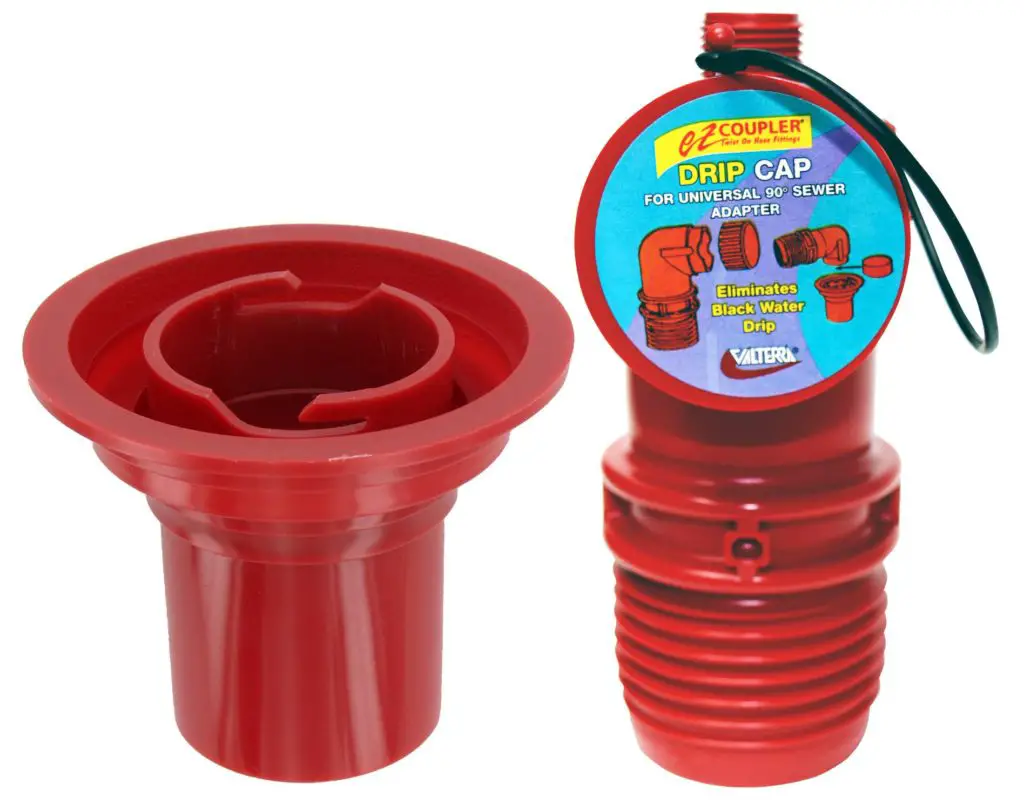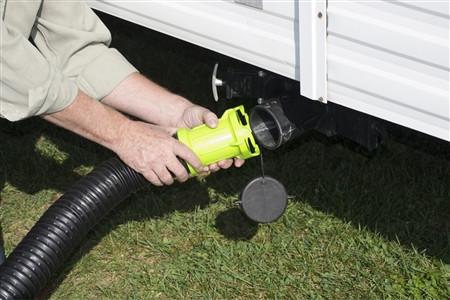Whether you’re doing RV life full-time or part-time, it’s always recommended to have easy access to water to ensure that you can enjoy a more convenient and comfortable experience on the road. By the way, if you’re currently building your own van, check out our van build resource page. That said, you want to make sure you install a water system for your clean and wastewater. Newbies often ask if RV sewer hoses are universal.
RV sewer hoses are universal in diameter, typically 3 inches (7.62 cm), and have bayonet connections and fittings on both ends. But RV hoses are not always equal when it comes to dumping wastewater. A sewer hose adapter is needed to connect a 3-inch (7.62-cm) hose to a 4-inch (10.16-cm) PVC pipe.

The rest of this article will discuss the basics of RV sewer hoses, how to use them, and how to care for them.
Are RV Sewer Hoses Universal?
RV sewer hoses are universal when it comes to diameter. The standard RV sewer hoses are 4 inches (10.16 cm), but since most RV sewer hoses are 3 inches (7.62 cm) in diameter, you will need an adapter. An adapter will come in handy whenever you come across different types or sizes of sewer drain outlets at dump stations.
You may notice that your RV sewer hose is made with coiled wire and plastic or vinyl wrap over the wire. The vinyl wrap may come in different thicknesses: 15, 18, 23, 26 mils (0.38, 0.45, 0.58, 0.66 mm), and so on — the Camco RhinoExtreme RV Sewer Hose from Amazon.com, for example, is 23 mils (0.58 mm) thick. The thicker the vinyl wrap is, the more durable the sewer hose is against wear and tear.
Find this content useful 🙂 ?
Subscribe to our Newsletter and get a free Solar Electric Diagram + shopping list.
When you buy your sewer hose, you will need to get proper fittings for it. The fittings will go to the opposite ends of the hose. The fittings should fit appropriately into both ends, but sometimes that can be difficult to unsuitable sizing.
How To Tackle Sewer Hose Sizing Problems
To tackle sizing problems, it will help to have a hose with a sizing ring. You can easily remove the sizing ring to make proper installation easier. All you have to do is remove the sizing ring, then connect the hose fitting you want to use to your hose and secure the hose clamp.

To connect your sewer hose easier, you can also use threaded sewer hose fittings like the Valterra Universal EZ Coupler Sewer Adapter from Amazon.com, which can easily thread on the end of your sewer hose. You can also get other fitting variations for your hose, such as the Valterra EZ Coupler from Amazon.com, to extend two sewer drain hoses. You want to secure the fittings tightly to prevent water from leaking from the hose.
Bayonet Fittings

Consider using factory-installed bayonet fittings, such as the Camco RhinoFlex RV Bayonet Elbow Fitting from Amazon.com. Bayonet fittings are easy to work with because you can secure your hose connections by simply rotating the fittings. What’s great about these fittings is they do not cause any twist to your sewer hoses; thus, your hoses stay flat on the ground.
Understanding the Basics of RV Sewer Hoses
It doesn’t matter whether you’re traveling in your RV long-term or short-term; you need to have a dedicated water system for getting clean water and disposing of wastewater. Sewer hoses are necessary because you can’t conveniently do any washing or showering in your vehicle without them. Not all sewer hoses are created equal, so it’s essential to put some thought into the sewer hoses you’ll use for your trips.
There are two types of RV wastewater:
- Gray water
- Blackwater
The gray water is water from anywhere other than the toilet, such as the water from showering, brushing teeth, doing laundry, or washing dishes. In other words, greywater is water that does not contain human waste. On the other hand, Blackwater is water used for the toilet, and thus, it contains human waste.
Disposing of RV Waste Water
It is illegal to dispose of RV waste water irresponsibly due to environmental concerns. Wastewater from an RV can attract disease-carrying flies, which can be dangerous to humans. Plus, wastewater contains soap and chemicals that can be damaging to soils and plants.
That is why you should always dispose of your wastewater correctly in designated areas. Failure to do so may get you fined a hefty amount, jail time. California, for example, has a law that punishes people up to $10,000, or up to 6 months of jail time, for illegal dumping on public and private properties.
Handling Your Waste Water
You’ll need to have two separate tanks for your wastewater, one for the black, another for the gray. As for your sewage system hose, you only need one. However, there’s nothing wrong with having several more in case the first one breaks.
There are two types of sewer hoses:
- Extension sewer hoses. Sewer hoses are usually between 15 and 20 feet (4.57 and 6.09 m), which is pretty long, but sometimes it’s not enough when you have to park your RV further. You can buy extensions for your sewer hoses to add an extra 15-20 ft (4.57-6.09 m) of length.
- Collapsible sewer hoses. If space is a big concern, it will be ideal to use collapsible RV sewer hoses as they do not take a lot of space and are convenient to keep. Another reason for considering these hoses is you can make them short to suit your needs.
How To Use RV Sewer Hoses

As discussed earlier, RV sewer hoses are commonly 3 inches (7.62 cm) in diameter, although standard RV sewer hoses are 4 inches (10.16 cm). That doesn’t mean you can’t go with larger hoses, though. Some people use sewer hoses that are 6 inches (15.24 cm) in size to make it easier for black water and its solid content to flow out of the RV.
If you’re going to use a 6-inch (15.24-cm) hose, you want to make sure that you have an adapter to make the transition from a 3-inch (7.62-cm) hose to a 6-inch (15.24-cm) hose. Again, it’s okay to have only one sewer hose for your RV, but a second hose may come in handy. Whether you bought your RV new or used, sooner or later, you will have to replace your sewer hose.
Caring for Sewer Hoses
Sewer hoses are thin so that they’re flexible. However, since these hoses are thin, they are not resistant enough for the cold winters. To ensure your sewer hoses will last longer, you must not leave them exposed in the outdoors for too long, either.
Store your sewer hoses in a dedicated bin or bag if space is not an issue. You can mount your sewer hose carriers on your RV’s back. You can also keep their sewer hose carriers underneath your RV’s bumper.
Final Thoughts
RV sewer hoses are universal in diameter. Even though the standard diameter of RV sewer hoses is 4 inches (10.16 cm), most RV sewer hoses’ diameter is 3 inches (7.62 cm). You’ll need a sewer hose adapter for different types and sizes of drain outlets at dump stations.
Never irresponsibly dispose of your wastewater, especially in public places, to avoid contaminating the environment or receiving a hefty fine. Opt for larger hoses, if possible, to make your black water and its solid content flow more smoothly. You must take good care of your sewer hoses to ensure they’ll serve you longer.

